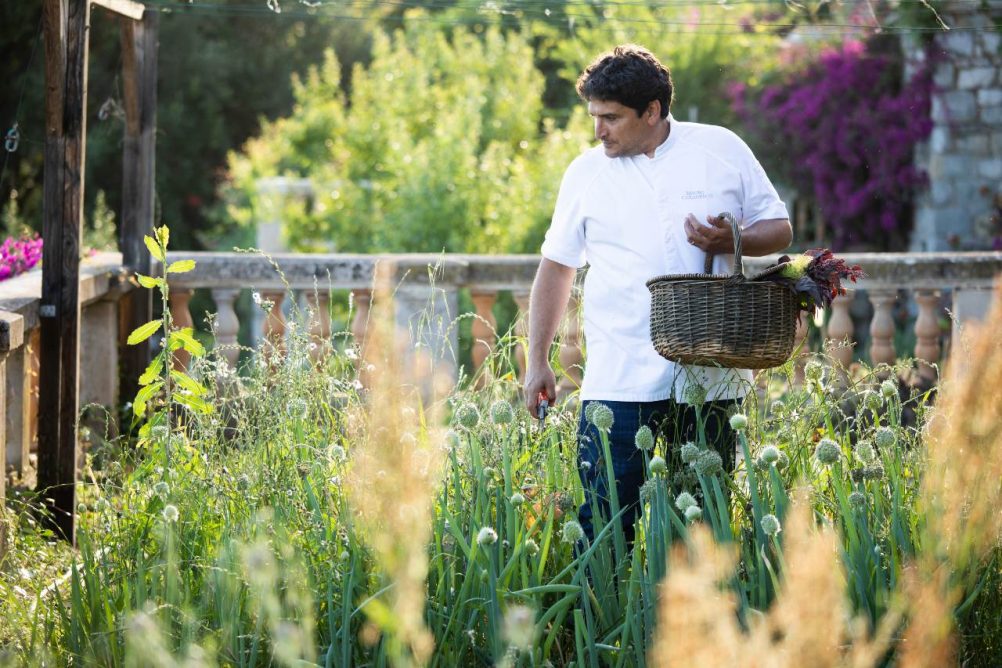Back from the brink
How chefs around the world are championing biodiversity.
Words by Ute Junker
Photos supplied
He’s a crusader committed to rescuing endangered plants from the brink of oblivion but the most surprising thing about Alessandro Di Tizio, a lanky ethnobotanist, is not his impressive dreadlocks. It is where he chooses to work.
Instead of plunging into the jungles of South America or the forests of Africa, Di Tizio hunts down rare species on the French Riviera. Part of the team at the three-Michelin-starred restaurant Mirazur in the town of Menton, he says that much the area’s rich gastronomic heritage is on the verge of disappearing.
“We have two different varieties of beans that are found only in one village – they almost disappeared during [the bombing raids of] the Second World War. There are only three or four producers who keep up the traditions, and they only produce around 200 or 300 kilos a year.”
DI Tizio works with local communities and growers to identify these ancient plants before they disappear. They are then nurtured in one of the half-dozen gardens Mirazur has scattered around the area, including the wild sloping site we are currently wandering through.
As we walk, Di Tizio points out dozens of species of almost-forgotten plants. Many of them, such as the dandelion-like radichiella dei prati flourishing beside a dry-stone wall – once commonly eaten here as a salad vegetable – could be mistaken for weeds. Others such as the sorb tree, which grows rosy golf-ball sized fruit, were rediscovered through serendipity.
“It’s a very old variety that was almost completely lost – we found some plants growing along the sides of abandoned fields. The R&D team doesn’t know yet what to do with them,” Di Tizio says.
Early experiments included drying the fruits and turning them into a powder used to sweeten biscuits. “We’ve now crushed the fruit into a paste – maybe we might make a sort of miso,” he muses.
Led by chef Mauro Colagreco, the Mirazur team not only runs one of the most acclaimed restaurants in the world, it is also on a mission to ensure that ingredients that formed part of the local diet for generations do not disappear. The loss of biodiversity around the world, Colagreco says, is a crucial issue.
“More than 50 per cent of agriculture today is just five products – corn, rice, soybeans, wheat and potatoes – and usually two or three varieties of each,” he says. Monocultures are not just vulnerable to pests; they also deprive our palates of the full range of flavours that our ancestors once knew.
Around the world, other chefs are also on the case. Peruvian chef Virgilio Martinez and his partner Pia Leon raised eyebrows back in 2018 when they followed up their acclaimed Lima restaurant, Central, with MIL, a rustic restaurant sitting amid the peaks of the Andes, around an hour from Cusco and 3500 metres above sea level.
This region is home to 85 of the world’s 110 climate zones across its peaks and valleys, and new plants are still being discovered. Like Mirazur, MIL dedicates significant resources to research and development of the area’s natural riches.
Diners who sign up for the MIL Immersion (at US$620 a pop) don’t just get an eight-course meal. Their experience includes visiting local communities and the nearby Incan archaeological site of Moray, as well as a walk with a forager who identifies local species and their medicinal and nutritional benefits. For Martinez, it’s all a means to get his message out.
“We are interested in inspiring people [from] other disciplines and people who might be even more involved in solutions to the problems we live with,” he says. “Entities inside and outside of government, businesses, and entrepreneurs, creating a community of people who work consistently to generate bigger changes together.”
You might also like:
Michelin’s green stars: here’s what you need to know



